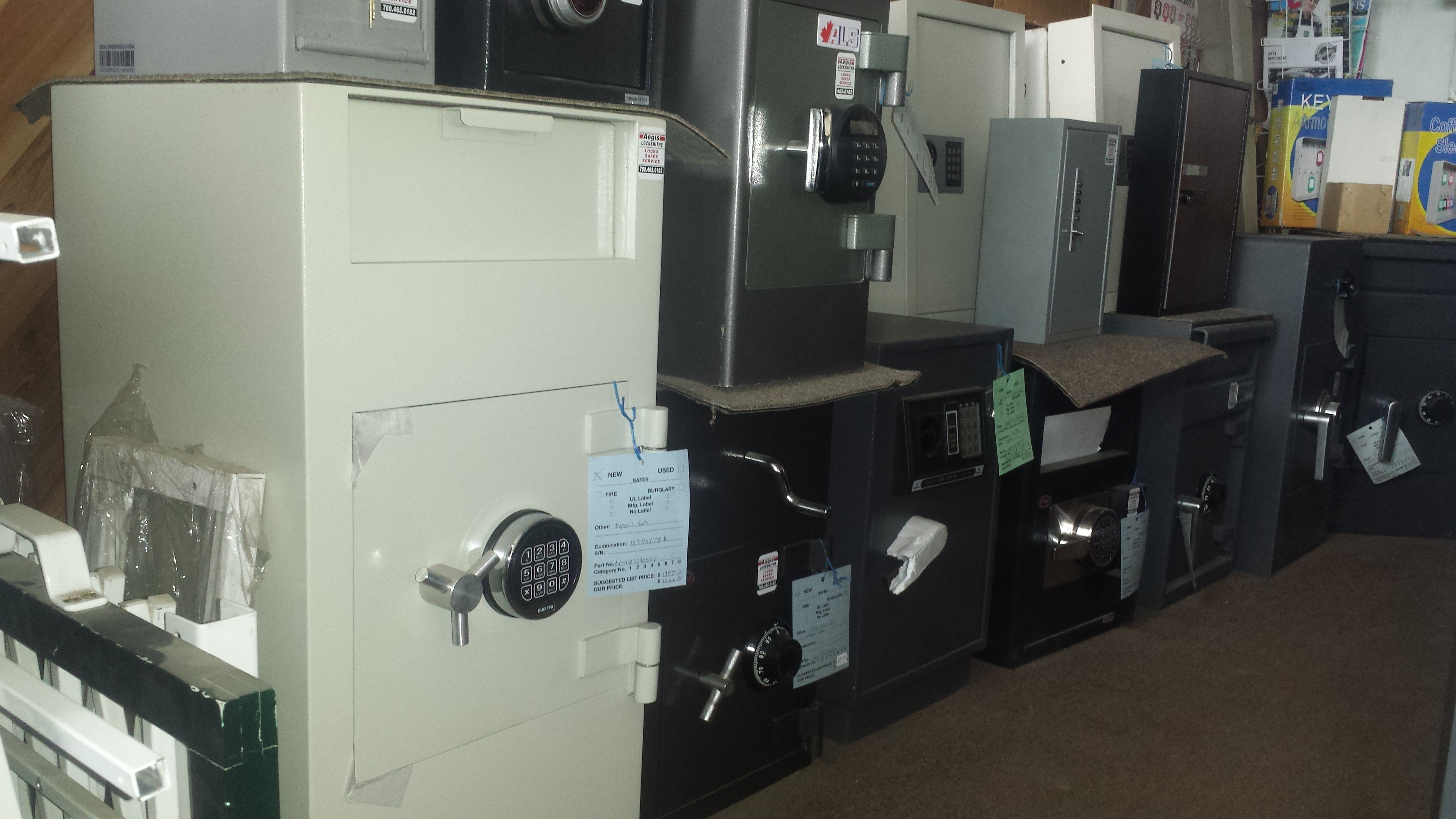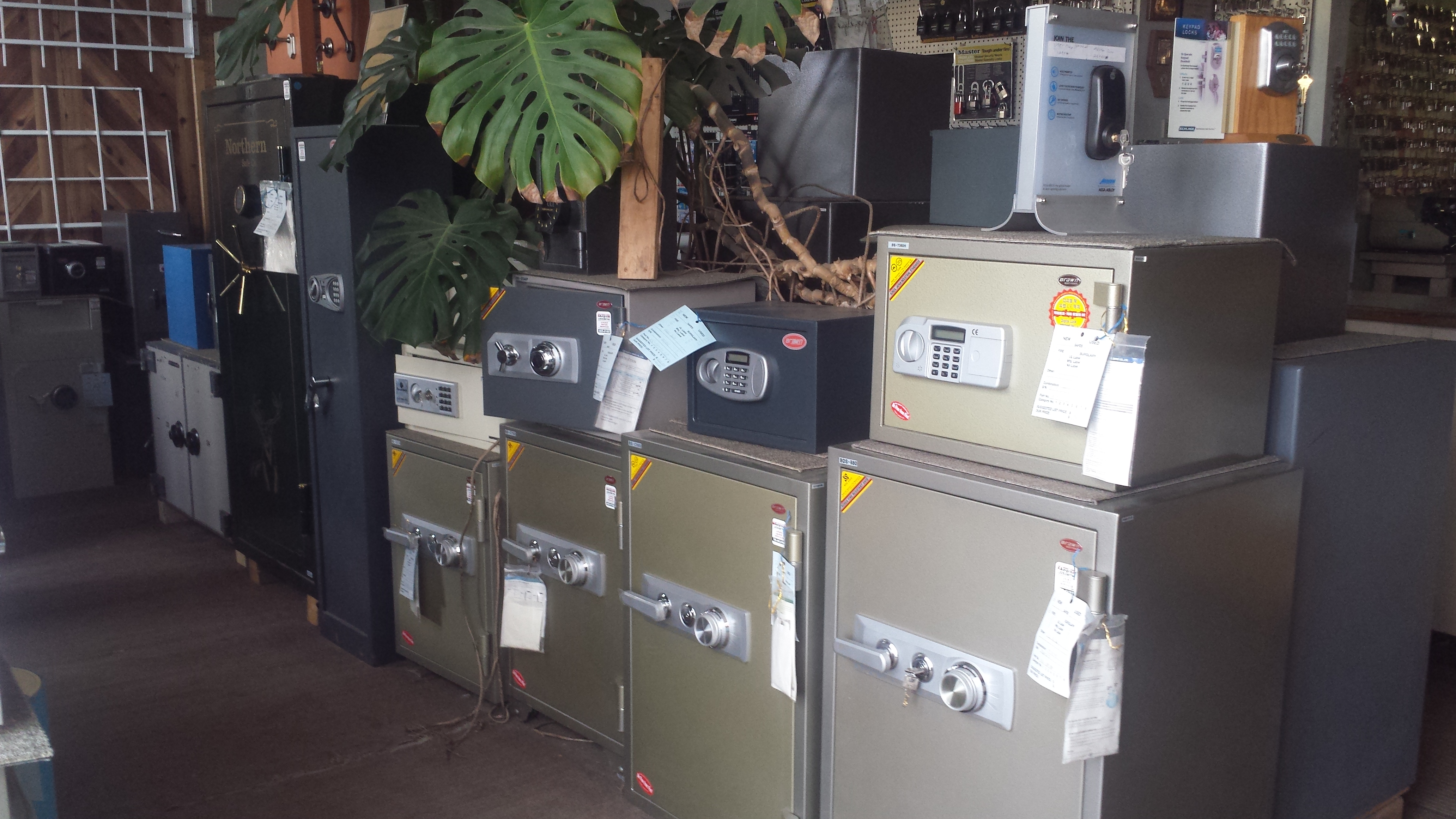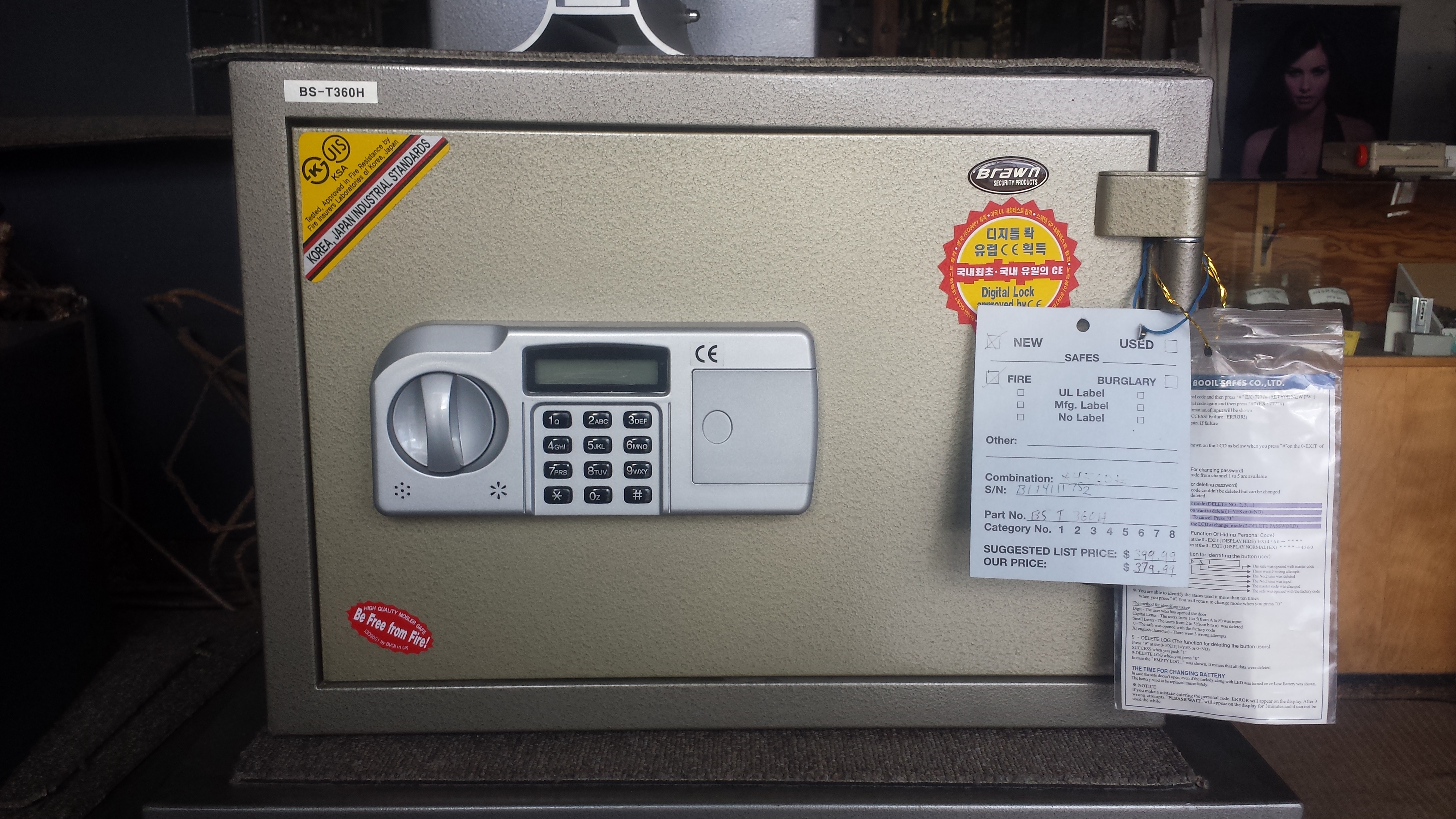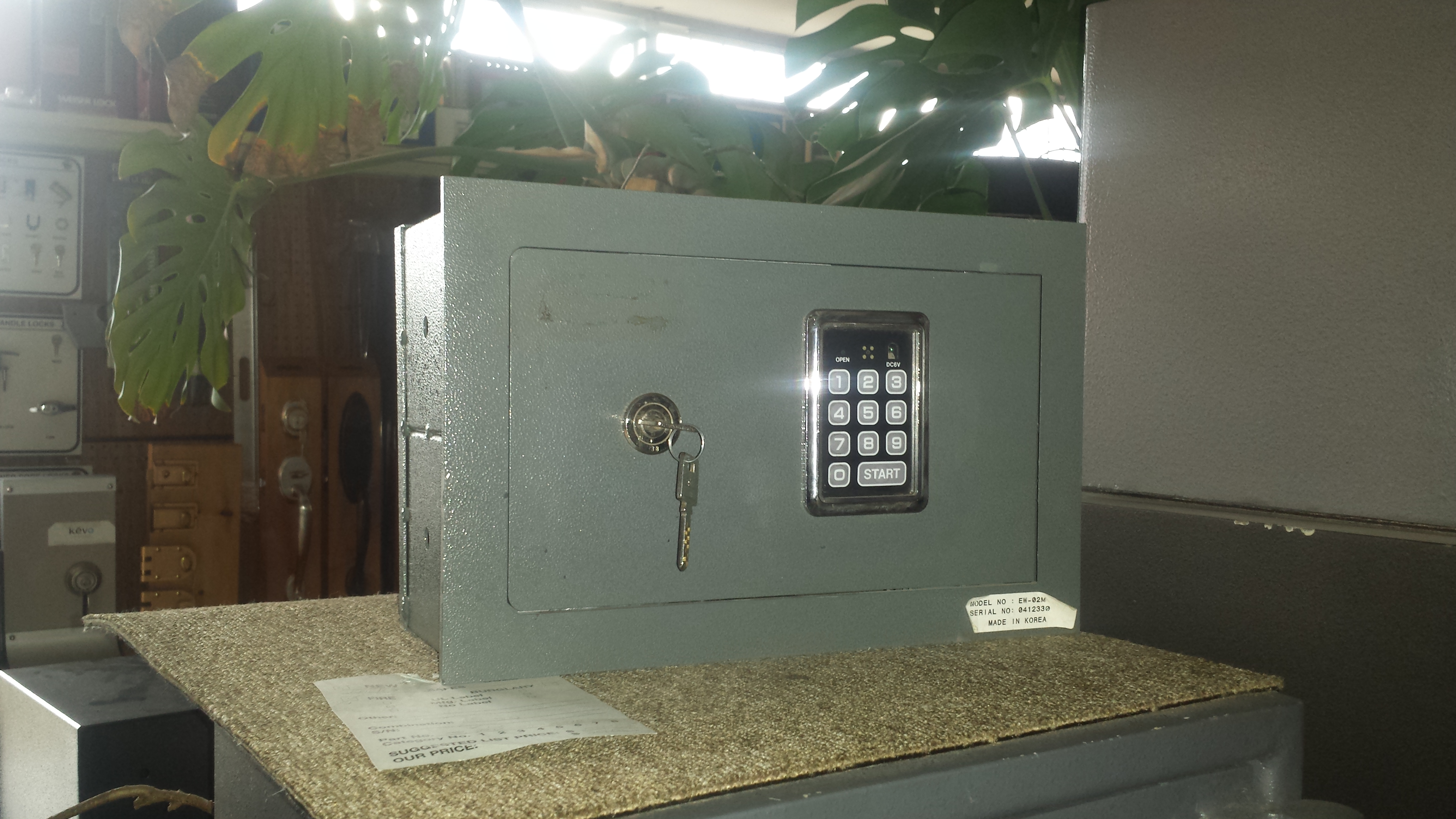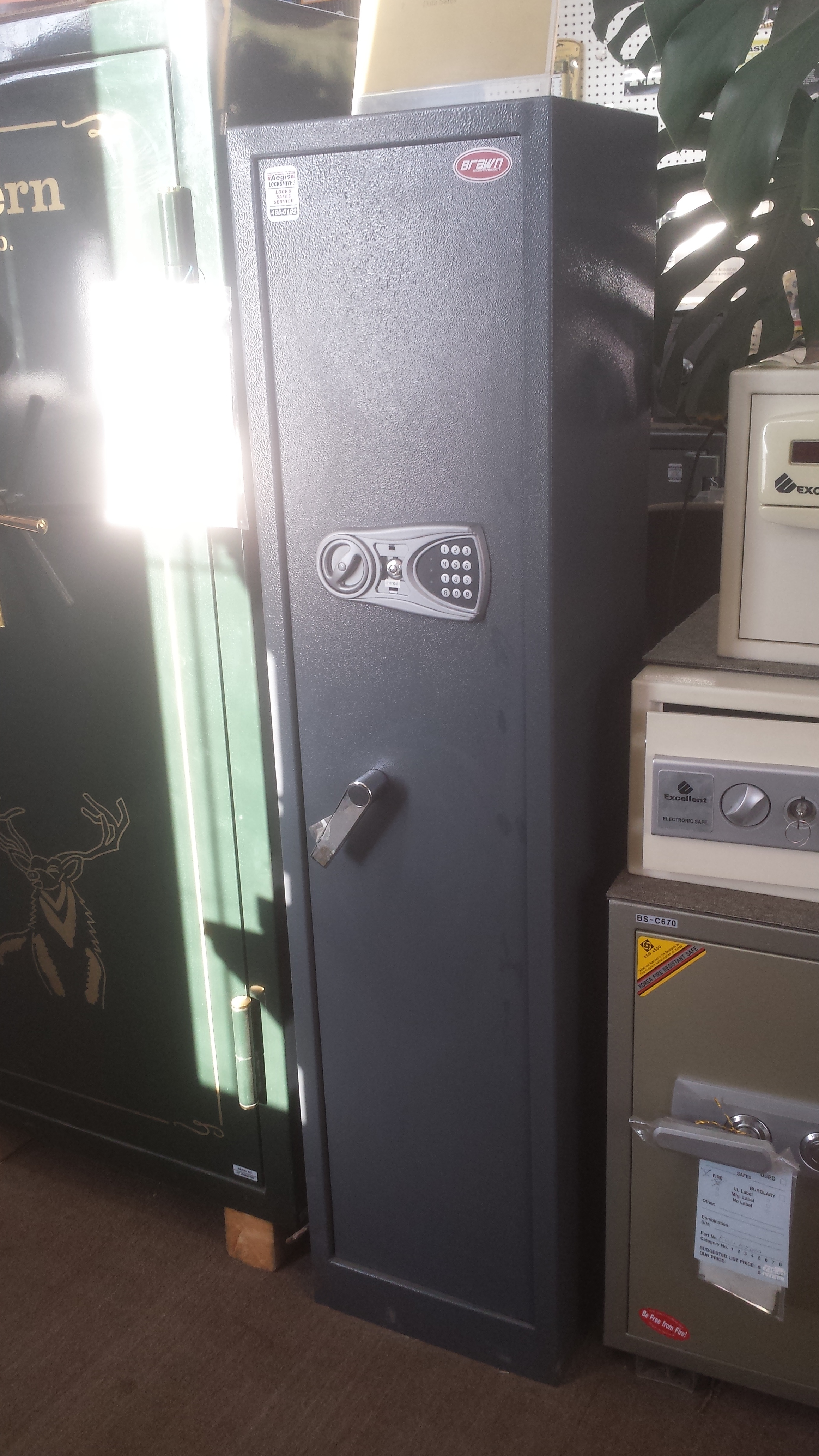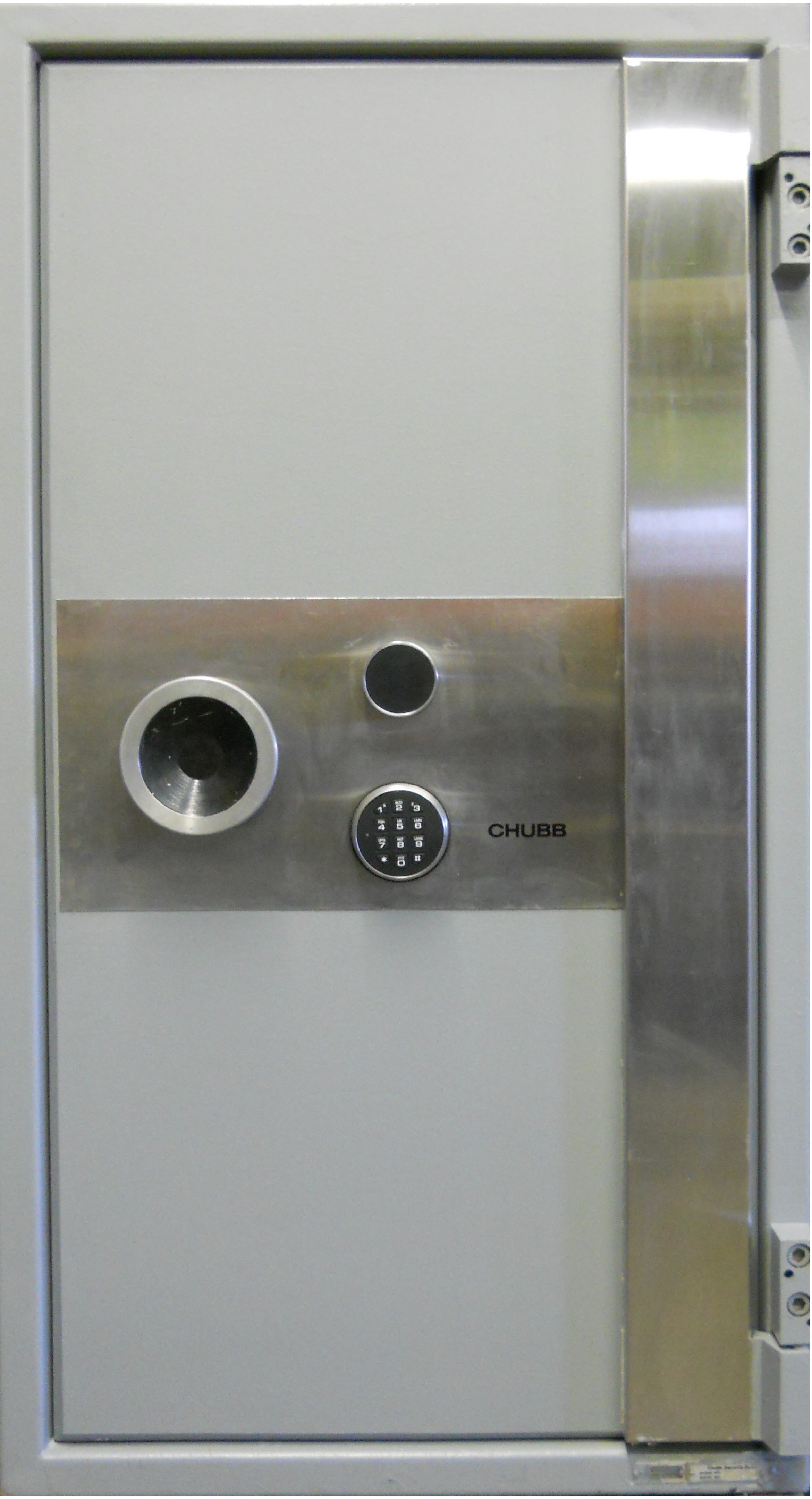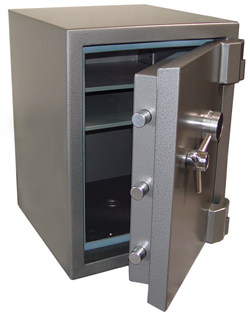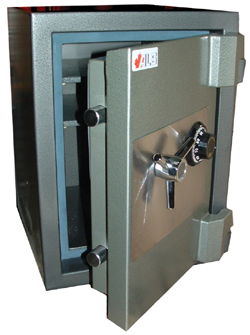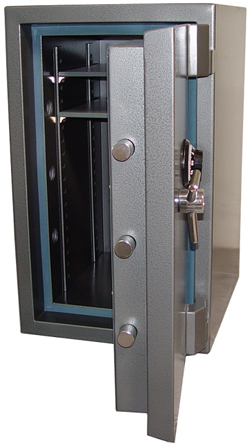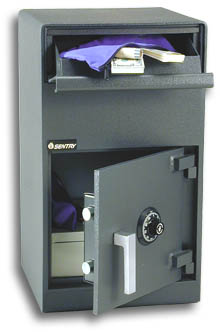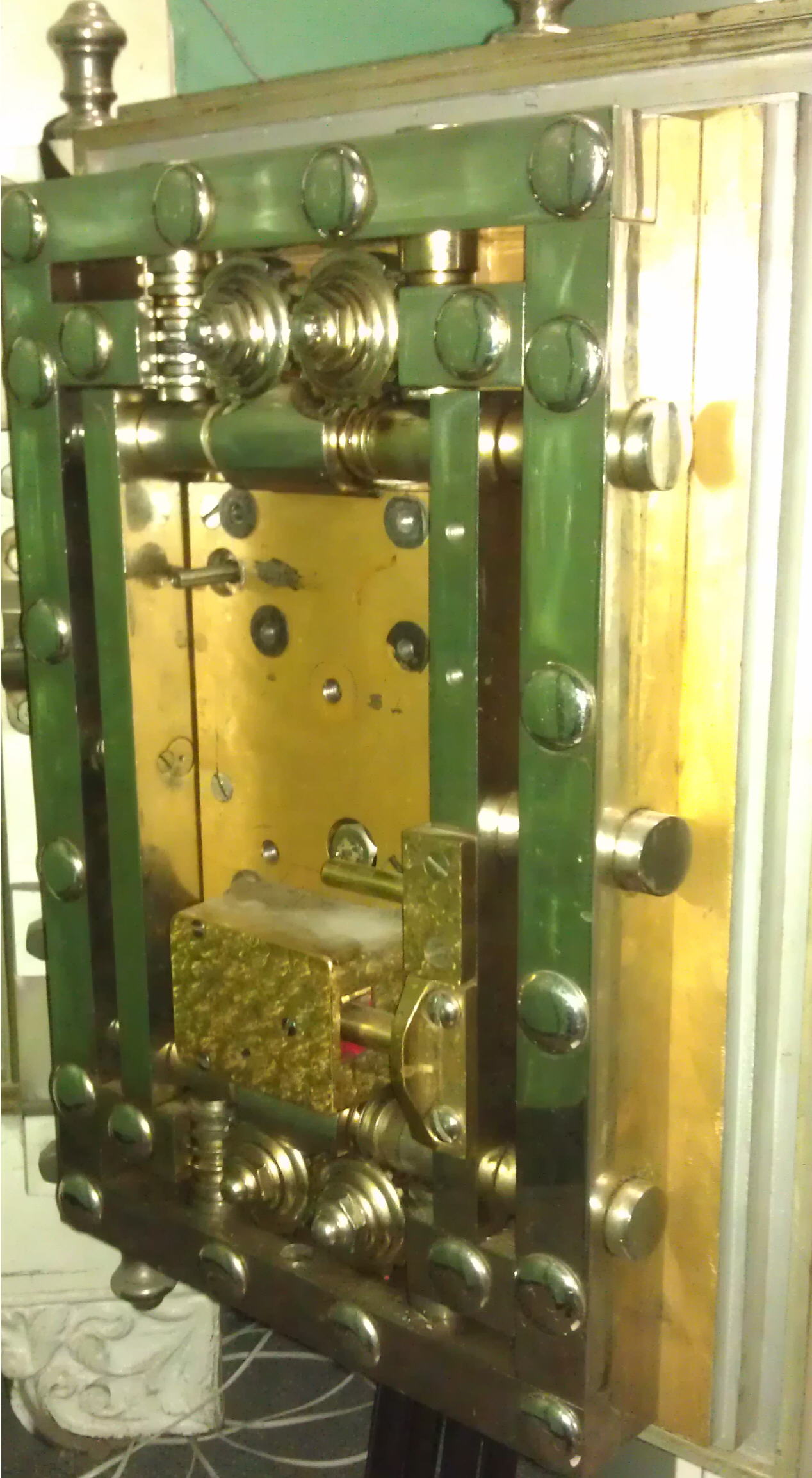Aegis Locksmiths has one of the largest selections of new, used and antique safes for your home or business. Hundreds of new, used, antique, burglary, cash, composite, data, deposit, fire, undercounter and wall safes.
- Combination Changing
Do you have a Mechanical Safe Lock with Combination Dial and don't know who all has the combination? Change it to a new combination! New, used, antique or most any with a dial combination can be changed in a matter of minutes. NOTE: The Sentry Safe Group manufactures safes that are set at the factory and cannot be changed due to the construction of the lock. In many ways this is not very beneficial, but an advantage is the factory will always have the combination to your safe if you ever lose or misplace the combination.
- Conversions from Mechanical Dials to Electronic Digital Locks
Tired of dialing your combination? Remove the mechanical safe lock with dial and install an electronic lock and digital keypad!
- Door Repair
All burglary and fire retardant safe doors can be restored back to factory specifications. Do you ever attempt to open or close your safe door and it just doesn't close properly anymore. Maybe the door is binding at the bottom or slightly out of alignment. We can fix it!
- Electronic Locks
Electronic Locks are ideal for the modern safe. They are very user-friendly and batteries can usually be changed without difficulty. Consider upgrading your mechanical safe lock with dial to an electronic safe lock with digital keypad.
- Hinge Repair
Is your safe door binding? Doesn't close properly? Safe doors are heavy! Your safe door hinges may need to be realigned or repaired.
- Installation
Need a safe installed in your home or business? We can sell you the safe and deliver it to your location, but what good is the safe if we don't put it in the place you like? Or bolt it down?
- Lock Repair
Is your safe causing you issues everytime you try to enter the combination or code but the safe is not always allowing you entry? The problem could be as simple as a 2-minute repair by replacing an old worn part, or maybe fresh batteries will do the trick. Whatever the issue we can fix it.
- Lock Replacement
Sometimes a mechanical or electronic safe lock is just worn out and would cost less to replace the lock than to attempt to repair the old one.
- Mechanical Locks
Do you prefer the "old school" safes with a mechanical lock with combination dial?
- Moving
We take great care in safe moving and should never be attempted by non-qualified individuals as things can go terribly wrong in a hurry.
- Opening
Locked out of your safe? No problem. We have well over 100 years experience in safe opening.
- Refurbishing
Do you have a nice old antique safe that you would like to restore back to when it looked new? We can do that for you.
________________________
$ Safe Specials $
________________________
- Small Home Fire Safes
List Price: $399.99
Our Price: $379.90
________________________
- Small Home Wall Safes
List Price: $325.50
Our Price: $294.00
________________________
- Large Home Fire Safes
Special Price: $0.00
________________________
- Small Home Gun Safes
List Price: $399.95
Our Price: $299.95
________________________
- Large Home Gun Safes
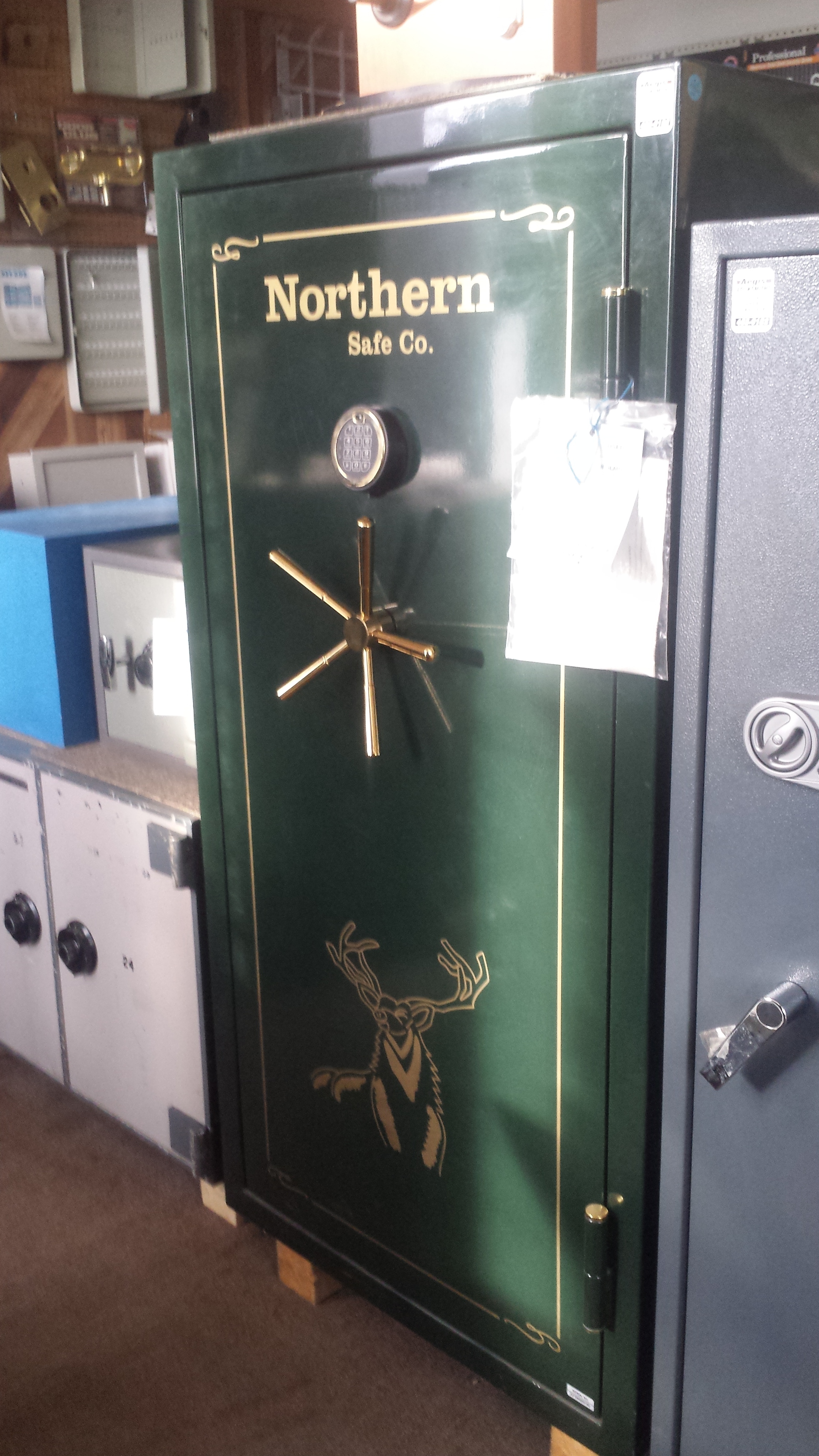
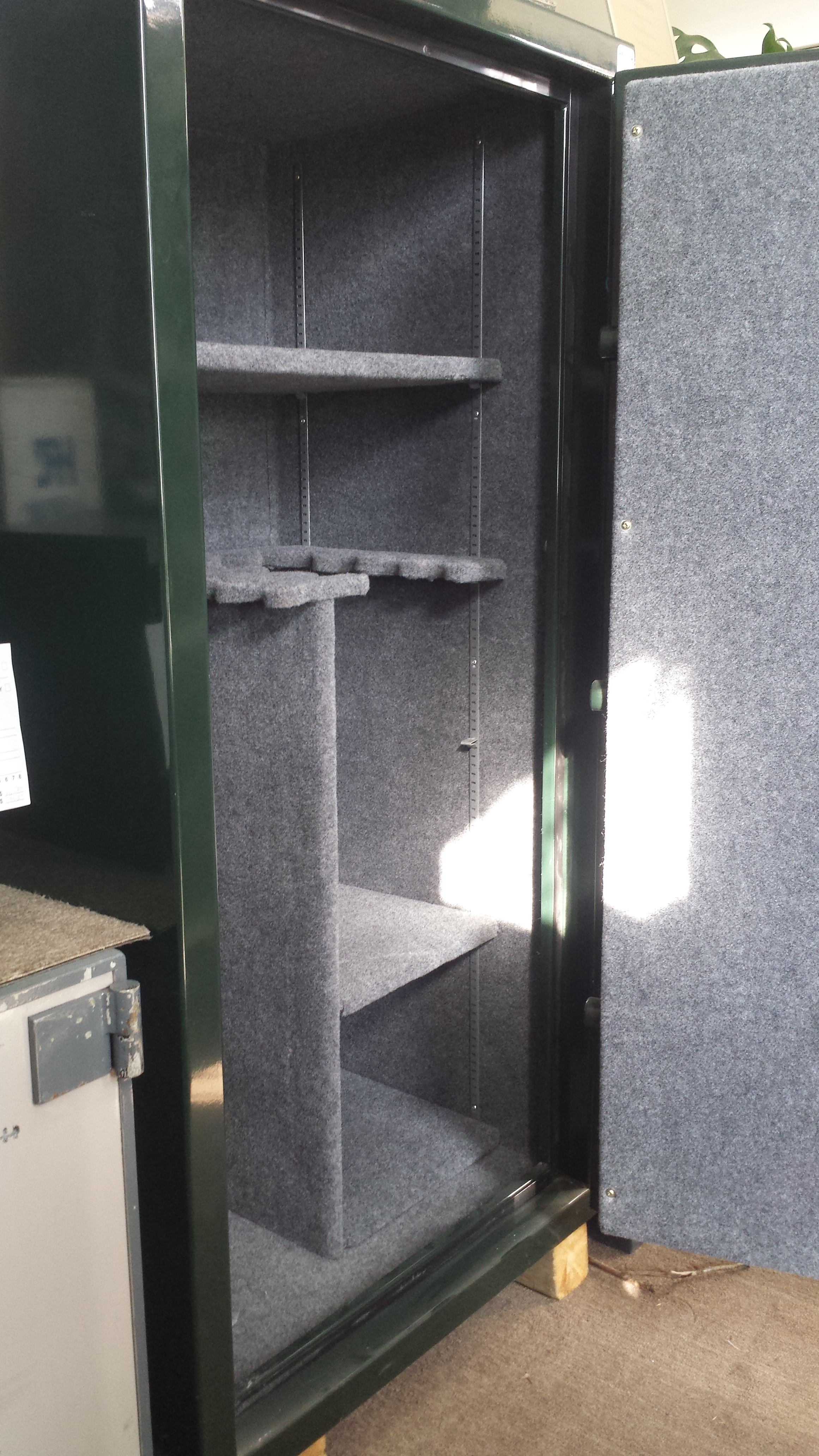
List Price: $1,920.00
Our Price: $1,728.00
________________________
- Small Burglary Safes
Special Price: $0.00
________________________
- Large Burglary Safes
Special Price: $0.00
________________________
- Small Composite Burglary/Fire Safes
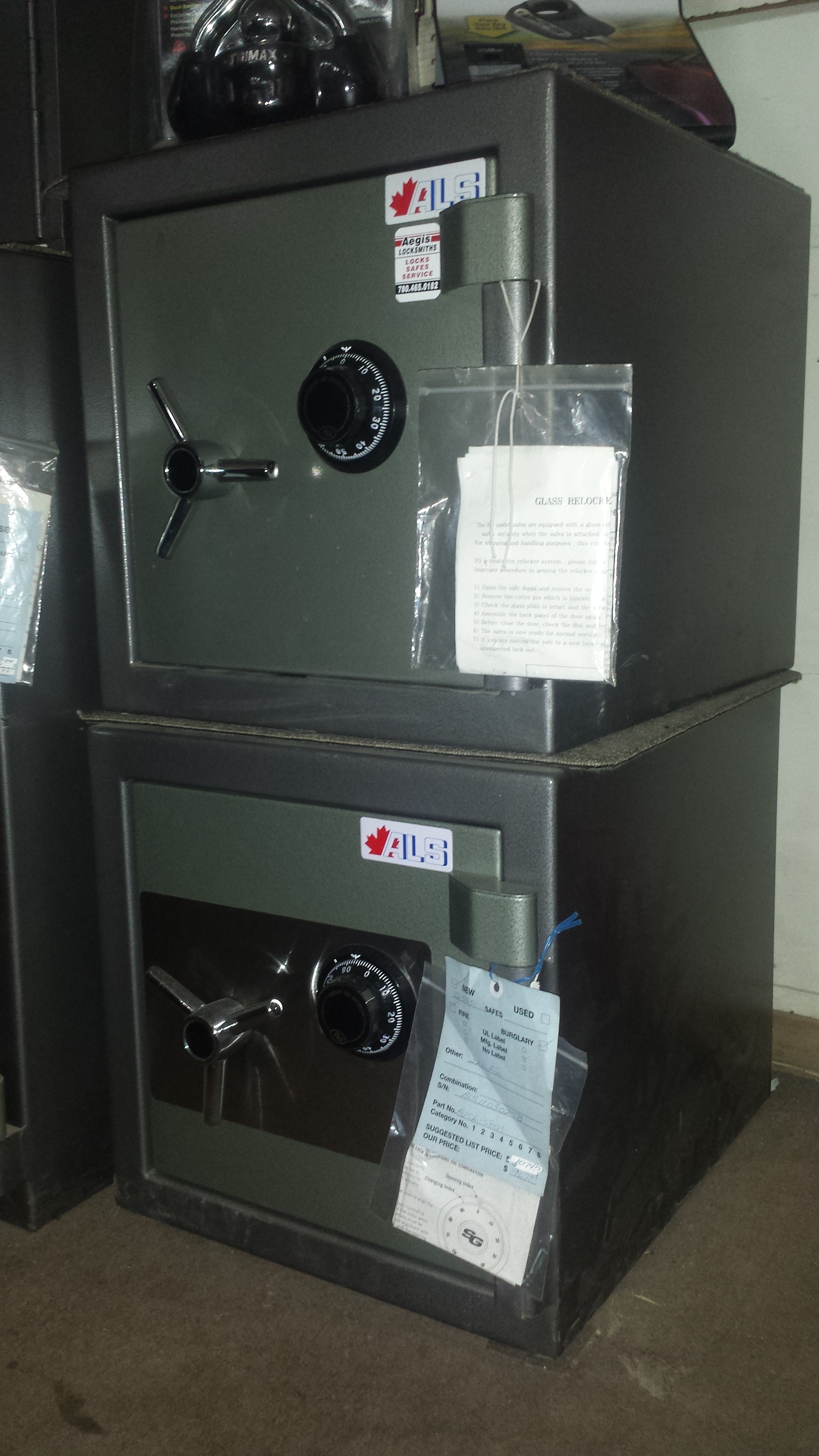
List Price: $1,074.50
Our Price: $967.09
________________________
- Large Composite Fire/Burglary Safes
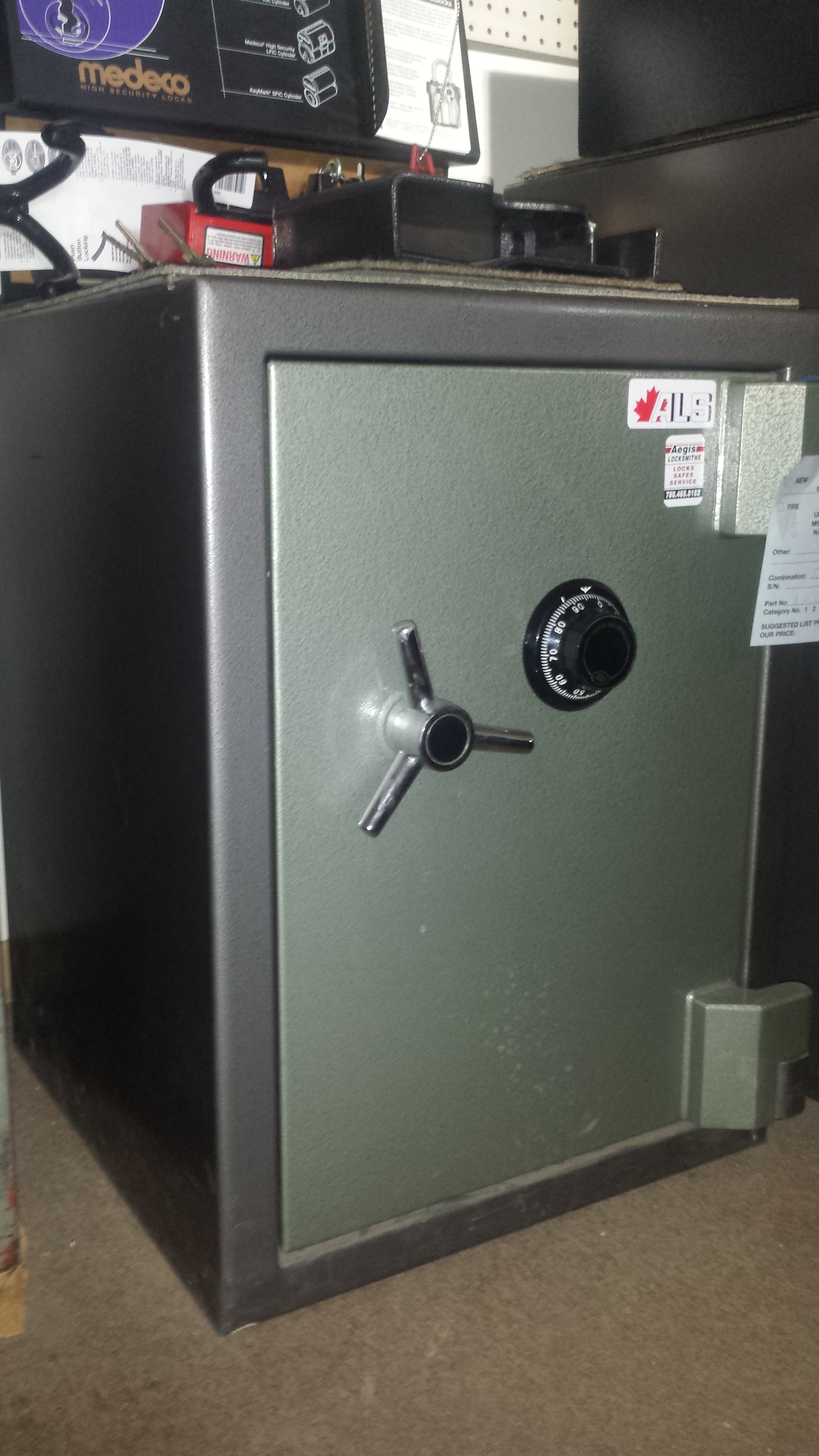
List Price: $1,606.00
Our Price: $1,508.40
________________________
NOTE: Prices subject to change without notice.
________________________
Frequently Asked Safe Questions
Q. - How much does it cost to open my safe?
A. - The cost of opening your safe will depend on the type of safe you own. Many factors are involved in safe opening fees such as burglary or fire or if it is new or antique and also the type of lock (mechanical or electronic) locking the safe. Some safes may have dual custody (two locks) required to open the safe, meaning we would have to defeat two locks instead of one, which of course takes more time and would cost more.
Take a photo or two of your safe (include a closeup of the mechanical dial or electronic keypad) and email the photos to safes@aegislock.com. One of our professional safe technicians will respond with a price to open your safe.
________________________
Q. - If I purchase a safe from you, do I have to move it myself or will you deliver?
A. - Yes we deliver! We will deliver the safe to your location and secure it to the floor if required. Unfortunately nothing in life is free, so there will be a fee for delivery and installation. The delivery fees will always depend on your location and obstructions (stairs or narrow doorways) during the moving process.
________________________
Q. - If I purchase a safe from you, do you keep a record of the combination?
A. - Yes and No. Our record-keeping completely depends on you and your preference. If you wish for Aegis to keep a record of your combination for emergencies we are glad to keep a record for you. Although if you prefer to be the only person with the combination to your safe then we respect your decision.
________________________
Q. - My safe seems light and I'm afraid of someone walking off with it. Is there any way this can be prevented?
A. - Most safes can be bolted down to the floor with heavy duty anchoring lag bolts. Many safe manufacturers now include mounting holes in the bottom of their safes for convenience.
________________________
Q. - What are "Safe Ratings"?
A. - All safes are required to be labelled for specific uses. Even though a fire safe may be fire-rated to protect against fire, it may only be rated for 20 minutes of fire protection in comparison to other fire-rated safes that have 1 or 2-Hour Fire Ratings. Burglary safes are rated for resistance to attacks. Composite Fire/Burglary Safes are rated for both fire protection and resistance to attacks.
See our Classification Ratings Guide below to determine the class of safe you require.
FIRE SAFE CLASSIFICATION RATINGS
- 20-Minutes
- 30-Minutes
- 1-Hour
- 2-Hour
- Class 150
- Class 250
- Class 350
Never store your sensitive computer media inside of a fire safe without the proper protection of a Data or Media Safe and/or Vault inside the fire safe. Data or Media Safes and Vaults are designed to protect computer disks, microfilms, or anything that will perish much quicker than paper documents and therefore require extra special attentive care to preserve these valuable items.
BURGLARY SAFE CLASSIFICATION RATINGS
Burglary Safes are rated by Classes of Tool, Torch and Explosive Device Resistance. Each Class will determine the minimum amount of time involved to open the safe in a normal circumstance using torches, explosives or other safe-opening tools to open the safe.
Class 1:
Minimal Burglary Resistance
Most Class 1 Safes take only a few minutes to open with the proper tools.
These are also known as B-Rate, "RSC - Residential Security Containers" or "Strongboxes".
These Safes are manufactured with a minimum 1/4" inch thick walls and 1/2" inch thick door.
Class 2:
Medium Burglary Resistance
Class 2 Burglary Safes are manufactured with a minimum 1/2" inch thick walls and 1" inch thick door.
These safes may also have a classification of a "C-Rate" Safe.
Class 3:
Medium-Maximum Burglary Resistance
Many Class 3 Safes will have a little added protection against attack, such as a glass relocking plate in front of the lock if someone should attack the lock through the door with a drill or other tools. Once the glass breaks it releases additional locking pins or bolts that secure the safe even further.
Class 4:
Maximum Burglary Resistance
Many Class 4 Safes will have one or more internal "active" relockers that release when attacks are attempted. These active relockers will have a small side pin inside the relocking device that locks into the side of the main relocking bolt to help prevent lifting or moving the relocker out of the way in order to open the safe.
Class 5:
Government Security Application Resistance
GSA Safes & File Containers
Designed for Controlled Substances
Class 5 Burglary Safes are used in all Government and Military applications
Class 6:
Espionage Resistance
Class 6 Burglary Safes are designed for protection of top secret Government and Military applications. This usually includes small open-area Military Bunkers and Fallout Shelters including most private Government facilities.
Class 7:
Omega Resistance
The Omega Resistance is a Classification that represents a minimum 120 minutes (2-Hours) to open using tools, torches and blast explosives.
Most people are not familiar with the Class 7 Omega Resistance protection because it is usually reserved for Underground or Mountainside Military Bunkers or Fallout Shelters. Omega Resistance is designed to withstand some of the grestest forces on the planet, such as nuclear detonation.
TL/TR/TX RATINGS
TL (15,30, 60, X6):
Tool Resistance
Many burglary safes are labelled with a TL Rating for a certain length of time. A burglary safe with the TL-15 Rating indicates the burglary safe is rated for an attack on the burglary safe that will take a minimum 15 minutes to open with proper hand tools. The TL-30 Burglary Rated Safes indicate a minimum 30 minutes to open with proper hand tools.
TR (15, 30, 60, X6):
Torch Resistance
TX (15, 30, 60, X6):
Explosives Resistance
TR/TL (15, 30, 60, X6):
Tool & Torch Resistance
TR/TL/TX (15, 30, 60, X6):
Tool, Torch & Explosives Resistance
Mechanical Safe Locks
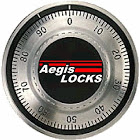
Mechanical Safe Locks are the driving force behind any combination dial. The mechanical lock was originated by Charles and Jeremiah Chubb back in the year 1818 and has continued to this day as the standard for mechanical safe locks. The mechanical safe locks are less prone to failure over the modern day digital safe lock because there are no electronics, wires or circuit boards inside of the mechanical safe lock that can fail and cause a lock-out. The only difficulties with the combination safe lock is becoming accustomed to the technique of dialing the proper combination. Most mechanical safe locks will have three wheels, which indicates that there is three sets of numbers required to open the safe, such as 50-25-75. The higher security burglary safes may have a four wheel mechanical safe lock which requires four numbers to open the safe, such as 50-25-10-75. It takes much more focus to dial open a mechanical combination than it does to press the numbers on a digital keypad to open the safe. Every mechanical safe lock dialing sequence is specific to dialing (turning) direction because of how the safe lock bolt is retracted or "unlocked". When looking at the above photo you will notice the Lever Nose enters the Drive Cam Gate where the Nose of the Lever acts like a hook to retract the locking bolt. If the dialing sequence was reversed the Lever would enter the Drive Cam Gate but would not hook the Drive Cam to retract the bolt and instead just skip back out of the Drive Cam. Electronic Safe Locks are a very user-friendly alternative to the mechanical safe lock. Electronic Locks are operated by a digital keypad that when the correct code is entered it sends a signal to the safe lock to verify the correct code. Good quality brand name fire and/or burglary safes: - American Security (Amsec) - Chubb - Diebold - Dominion - Eagle - Mosler - J&J Taylor - Chubb - Mosler - Taylor - Inkas - Meilink - Schwab - Securifort - Drummond - John Tann For good quality safes you will always find quality brand name Sargent & Greenleaf (S&G), Mosler or LaGard mechanical and electronic locks installed on their safes to ensure a quality product. Lesser quality brand name fire and/or burglary safes. - Brinks - First Alert - Garrison - Honeywell - Liberty - Saf-D-Posit - Saga - Sentry These safes are prone to malfunctions. Failed electronic circuit boards or poor quality metal alloys that fracture and cause safe lock-outs. Not All Safes Are Created Equal. One of the most common fire safes manufactured is a company called the Sentry Group. These safes are common due to the availability of these safes. Sentry is worldwide and can be purchased through many of the common retailers and large department stores. It is mostly a matter of convenience for most consumers looking to purchase a fire safe. "Quantity" does not always mean "Quality." Good quality fire safes can only be purchased through worldwide qualified lockshops and security suppliers. They may cost the consumer a little more, but it is certainly worth the extra effort to purchase a good quality safe that will give you years of worry-free protection. Nobody looks forward to entering the combination of their safe in order to retrieve their passport hours before they must leave for the airport -- only to find that they are locked out and cannot get into their safe. Better to be "safe" than sorry. 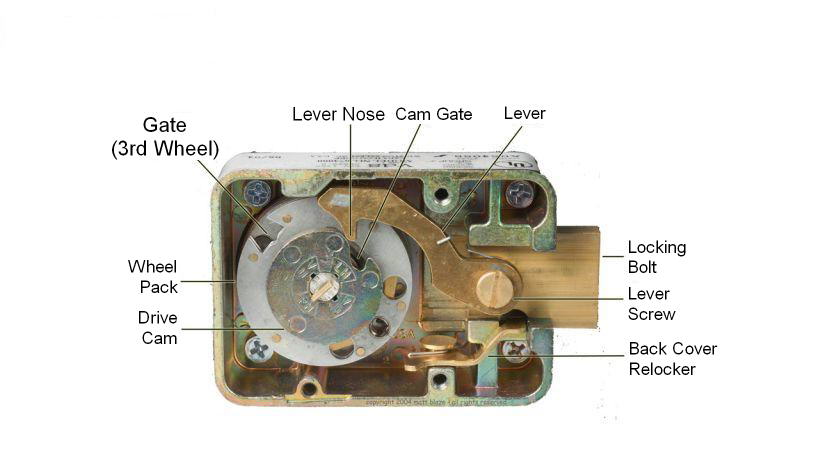
A common guide to dialing a safe open is knowing how many numbers are in the combination of a mechanical safe lock. If there are three numbers in the combination then it is determined that there are three wheels inside of the lock and therefore the dialing starts to the left. With any four wheel combination the dialing will start to the right. There are a few exceptions to the rule with specific safe manufacturers, but for the most part the rule of thumb is the same for all fire and burglary dial combination safe locks.
3-Number Combination (20-40-60): Start to the Left <-- (Left-Right-Left-Right To Open).
4-Number Combination (20-40-60-80): Start to the Right. --> (Right-Left-Right-Left-Right To Open).
Steps to Open a 3-Wheel Mechanical Safe Lock Using Example Combination 37-64-58
Step #1: Turn dial to the Left a minimum four (4) times to make sure you are engaging all three wheels. After engaging all three wheels, stop on the first number (37) of the combination. The first number (37) of the combination is now set.
Step #2: Turn dial to the Right and pass the second number (64) of the combination twice until you reach (64) a third time and stop. The second number is now set.
Step #3: Turn the dial to the Left passing the third number (58) one time and stopping on it as it comes around the dial again. All three wheels to the combination are now set but that does not mean the lock is open, it only means the combination is now set and ready to be opened after retracting the Locking Bolt.
Step #4: Turn the dial to the Right until the lever nose of the safe lock falls into the drive cam and retracts the locking bolt. The safe will now be open.
NOTE: You will immediately know if you entered the correct combination if the dial stops turning (somewhere around the number 95) to indicate the lever nose has entered the drive cam. This area of the lever entering the drive cam is called the "drop zone". If you turn the dial and it continues past the number 95 (can sometimes be as low as 85) it will indicate an incorrect combination.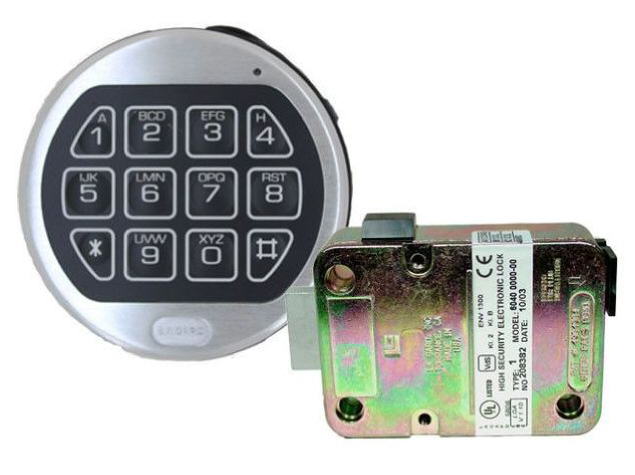
Electronic Locks tend to fail much more than mechanical combination locks because of the electronic circuitry inside of the safe lock and digital keypad. Great care is advised when owning a safe with an electronic lock on it. It cannot be emphasized enough to be careful not to pull on any of the wires coming out of the safe door that attach to the digital keypad because even the slightest disconnect will cause a lock-out.
WARNING! Only use Duracell® batteries in your electronic safe!
Most battery manufacturers produce batteries designed to be specific to the voltage of the battery. In other words, a 9-Volt battery direct from the factory will produce 9.0 Volts, but then it leaves the factory and goes through distribution to all the major retailers it will lose power over the time from manufacturing to loading them onto the store shelves. Then they may sit on the store shelves for even longer. From the time the battery leaves the factory and ends up on the shelf of your local retailer the 9.0Volt battery is now only 8.6Volts. In most cases there are no issues with this slight loss of power, but when it comes to electronic safe locks most locks do not like anything under 8.8Volts and can start to develop unusual issues when entering the code for your safe.
Duracell on the other hand ships their batteries from the factory well above the 9.0Volt, so by the time their batteries hit the store shelves they will still have an average 9.1Volts within the battery.
Many times we've had to respond to safe calls where the customer says "I just purchased brand new batteries for my safe but it still doesn't want to open". After asking the customer a few questions we usually determine the batteries are too old (even right out of the package from the store) and once the customer installs the Duracell batteries the issues disappear.
Always use Duracell® batteries in safes that have electronic locks with digital keypads.

